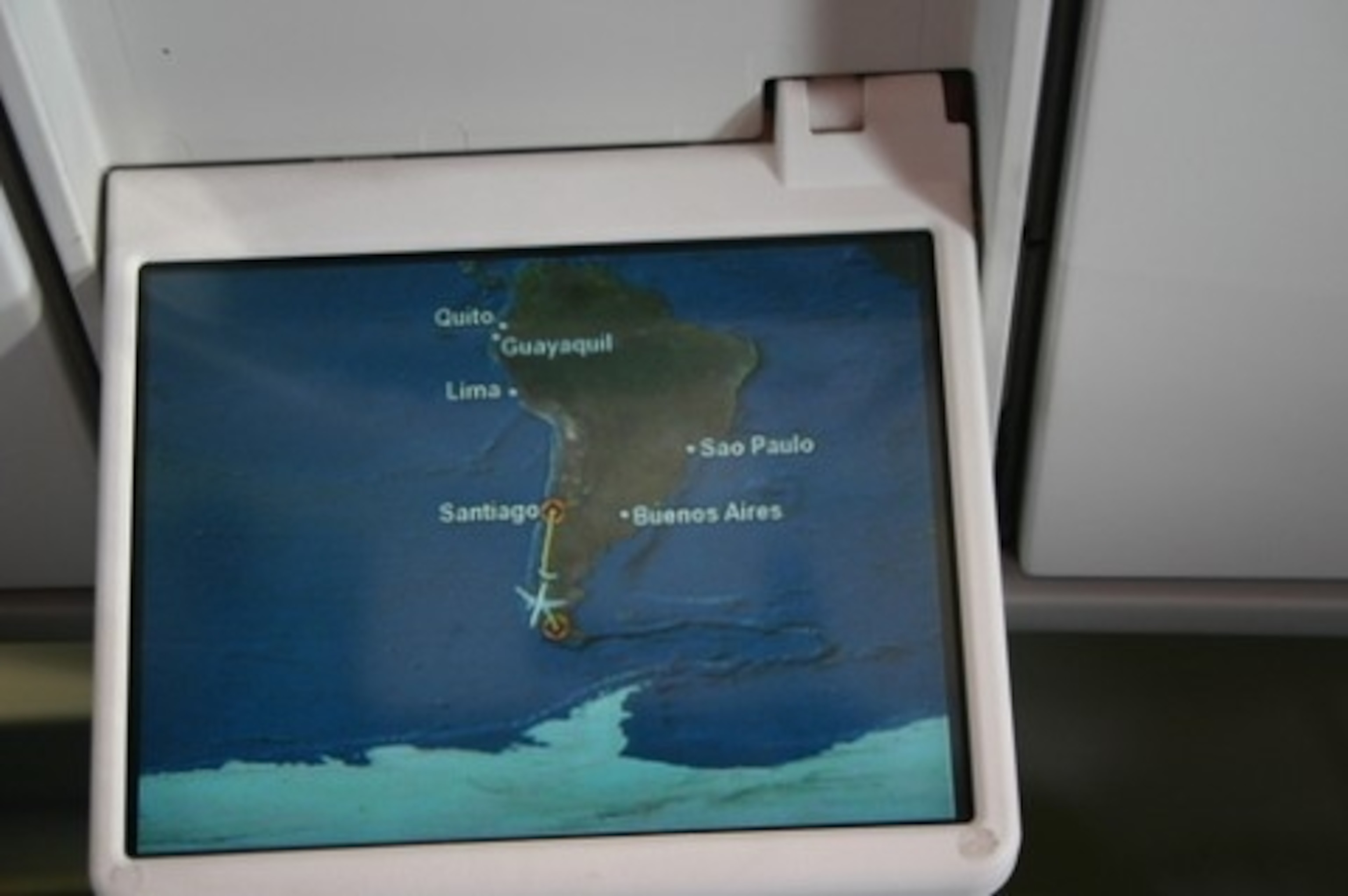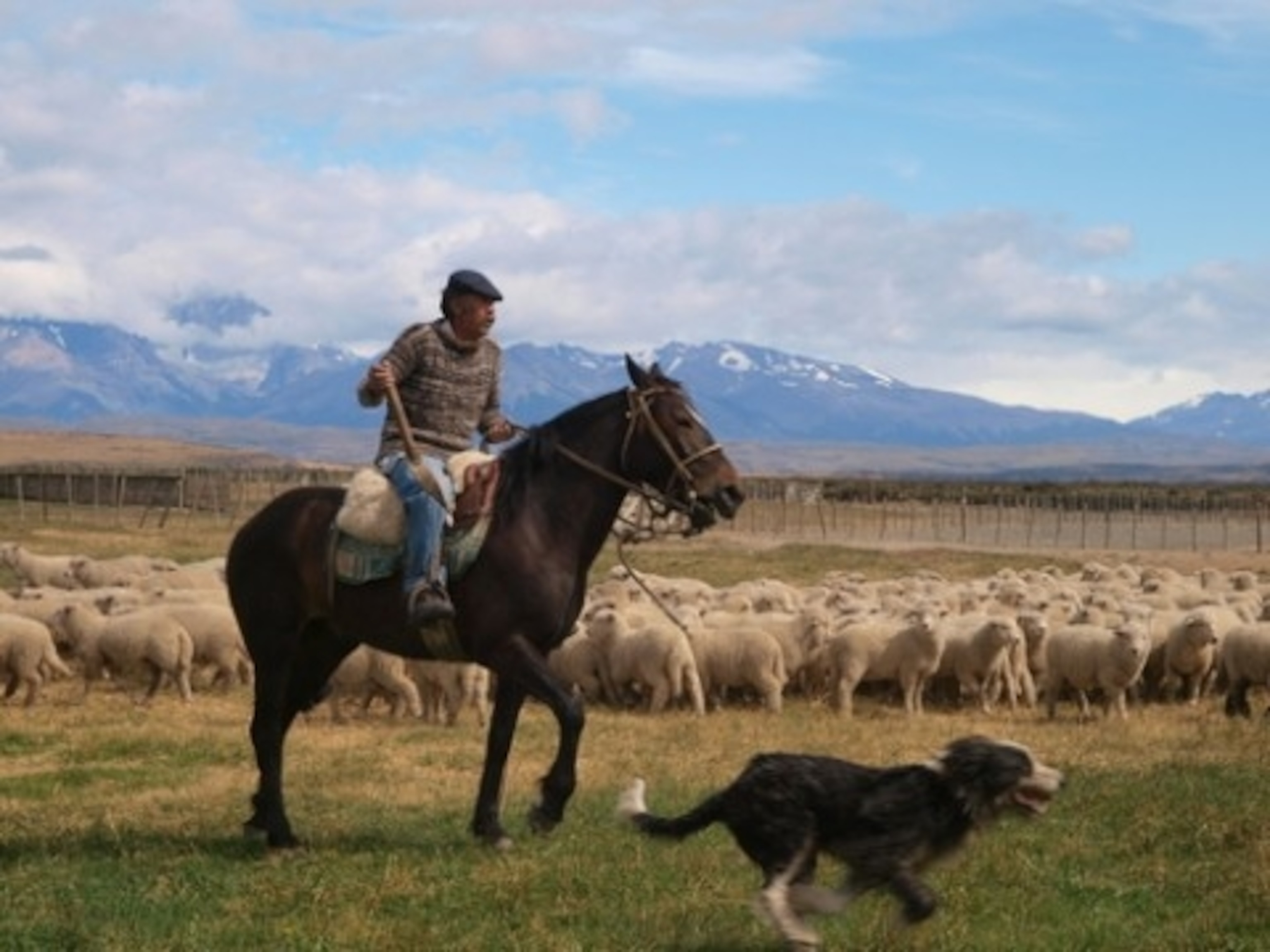
The Other Patagonia
When Andrew Evans left Chile’s Patagonia region, he had multiple filled notebooks and a camera that kept blinking “insufficient memory.” Here, he shares some of his sufficient memories from his trip.
Some countries just don’t get along–just the way people do. France grumbles at England, America shakes its head at France. The Swedes mock the Norwegians, Korea does not love Japan and the whole of Central America thinks Costa Rica needs to take it down a notch. All these little national rivalries are fascinating and hilarious, as long as countries stick to name-calling and don’t start trading bullets.
Patagonia spans two countries that love to argue: Argentina and Chile. Argentina accuses Chile of fudging its maps to look bigger than she really is, like padding a bra, while Chile thinks Argentina is a snob who’s too good for the rest of South America. Both still squabble about who gets the bigger pie slice of Antarctica, who has the southernmost city and who makes the better glass of red wine. Neither country can stand the other’s accent.
Like any two siblings, there’s a degree of jealousy in the mix. Argentina secretly craves Chile’s starched collar, its more stable economy and sound business record. Chile thinks Argentina is more sophisticated and wears way better shoes. The differences often seem petty, especially considering how much the two countries have in common: both Argentina and Chile harbor painful political histories, both are nations of immigrants and both own a piece of Patagonia.
Argentina always comes before Chile–in alphabetical order but also in Patagonia. In all the tourist brochures and travel books I’ve read, Argentina gets first credit for this most romantic hinterland of the southern hemisphere, followed by a cursory nod to Chile. Yes, there’s a lot more of Patagonia in Argentina than there is in Chile, and yes, Argentina’s population is about three times larger than that of Chile, but a beautiful section of Patagonia is in Chile, and that’s the part that I went to.
It seems that all travel writers–the aspiring and renowned–cut their teeth in Patagonia. Bruce Chatwin quit his day job to write his breathy memorial, In Patagonia. Pico Iyer gets philosophical about the same region that turned Jan Morris into a nationalist. Even Paul Theroux found a rickety train to ride in his book, The Old Patagonian Express. It’s staggering to consider all the other journalists and travel writers and bearded explorers who’ve already been down here and taken a stab at describing this incredible place–all the way back to Darwin’s colorful accounts in the Voyage of the BeagleDarwin’s colorful accounts in the Voyage of the Beagle. Today, a shallow Google search responds with a tsunami of blog accounts on Patagonia, some rich with description, others remarkably dull. And now me.
Adding my voice to history’s pile of Patagonia-praise is presumptuous and self-important, not to mention ridiculously daunting. I can write about the way Patagonia looks (like Norway and Kansas had a love child)
or talk about its weather (schizophrenic); I can describe how rugged and wild it all is (so rugged and so wild), that it makes you dizzy with vistas and that you would probably love it (absolutely), but really, how do you “capture” the most wide open place on earth?

On my flight to Patagonia, I sat on the right side of the plane so that my face-shaped window showed me the grassy green void of Chile below. If I peered over my neighbor’s lap to the left I saw snow, staggering mountains, and bits of Argentina–right in front of me, on a digital flight map, the white splash of Antarctica covered half the screen.
In Punta Arenas–the southernmost city in the world (if you’re Chilean)–I walked the barren square blocks with a pack of other travel writers who were also trying to capture and relay the evocative essence of Patagonia. It was late, around eleven o’clock at night, but the summer sun stayed suspended in the sky like a child not wanting to go to bed. Good people were at home asleep or watching TV behind closed blinds, but we were out exploring, gathered round a statue of Magellan that was plastered in pigeon poop. One writer broke the silence, “You know, I think I wrote a feature article about this place.” He slowly remembered the empty city, “Hey, I’ve totally been here before.” I scribbled into my notebook: “Patagonia’s cities are somewhat forgettable, the skies are not.”
We were visiting the part of Patagonia that you’re supposed to visit–the part with gravel parking lots at proscribed lookout points with postcard views, where the estancias are staffed with English-speaking baquianos and the international airport sells leather cowboy hats and souvenir DVDs for Zones 1-5. Waiting in that airport, I watched a charter plane of Chinese deplane and dodged a single-file busload of geared-up Germans, before meeting a red-faced group of Australian ice divers returning from Antarctica.
Today, Patagonia is a brand–literally, yes–but also as a geographic trademark for travelers. Visiting Patagonia has become a merit badge of adventure so that adventurous, well-traveled people feel compelled to transport their bodily selves down to South America’s windswept tail–not simply to experience the wonders there, but to say that they’ve experienced it. Indeed, the status of Patagonia has become as desirable as Patagonia itself.

Travel writers keep feeding the dream. Upon arriving, I quickly recognized the calendar-page symbols of Patagonia all around me and shot the requisite photos: the long-tailed sheep, the gnarly dogs that chase the long-tailed sheep, the wind-burned gauchos that train the gnarly dogs that chase the long-tailed sheep, and the distant wall of glacier-carved mountains. I did all the Patagonian things, too: I ate heaps of mouthwatering lamb grilled on a fire, I kayaked in front of glittering icebergs and galloped on the back of a wild-eyed horse.
But in all the marvelous show of “Patagonia”, I found myself separated from the actual destination. As a traveler in a ready-made world, it’s fairly easy to completely miss a place while you are there–to watch it all through a bus window or camera lens and go home pretty much untouched by the experience. On the flip side, you can’t force a moment or make a memory–you can only try and be open to them.
My personal antidote to constrained or pre-programmed travel is to take a walk. Wandering off-road leads to the unexpected, which is often the most authentic thing around. On my third day in Patagonia, I did just that–I left my colleagues and hiked across a barren mountainside for a separate view. Minutes later, a giant Andean condor landed just six feet away and stared back at me with his sinister, hooked beak. We looked at each other for a good minute or so–two fellow creatures–and I got that wonderful and incomparable travel feeling of being somewhere totally foreign. It’s that little high that keeps all travelers trucking and why I prefer open roaming to scheduled itineraries.
The problem with open roaming in Patagonia is that you might accidentally cross a national border. In the world’s skinniest country, I was standing at its skinniest point–just 3 kilometers from Argentina. Everywhere I went, somebody kept pointing to Argentina “just over there.” “See that mountain up there, that’s Argentina,” they said, or “Argentina’s just up the road.”
Somewhere in the endless field of colorless dirt and yellow-green grass clumps, there was that invisible line that divided Argentina and Chile. Borders never make a lot of sense to me, but in wide-open Patagonia, the notion of one country ending abruptly and another beginning is almost absurd. Someone even made a movie about it: “My Best Enemy” (Mi Mejor Enemigo) is a Chilean film based on a true story and recalls the border skirmishes of 1978, when the Chilean and Argentine militaries were each sent into the vague outlands of Patagonia to protect their respective countries from the menacing neighbors. In the film, the Chilean soldiers become disoriented and don’t know what side of the border they’re on–they end up befriending the opposing Argentines on the imaginary front line, borrowing cups of sugar from one another, playing soccer, and barbecuing together.
Perhaps in some other landscape on some other border somewhere else in the world, it would be different. Elsewhere, people might actually fight and kill each other for that line in the dirt, but with Patagonia, I have the impression that the land demands a separate solidarity well beyond the reach of faraway capitals. Perhaps this side waves a flag with a white star and the other waves a yellow sun, but out in this sea of land, the two countries seem two sides of the same mirror.
- National Geographic Expeditions
On my last day in Patagonia, I went out for one last roam–on horseback, wandering as close to the border as I could. I refrained from crossing the low barbed wire fence on the crest of the hill–that was illegal, though that didn’t stop the wild upland geese flying overhead or the sheep who stood in Chile while nibbling Argentina’s lawn. I gazed back down across the plains and paused at the same, unforgettable sky. The view was just like Nevada, I thought, except the lakes were filled with pink flamingos and they weren’t plastic. Once again, I felt that rare and deep sense of fulfillment in achieving some tiny aspect of some foreign place.
The more I travel, the more I recognize the border between experience and show–the constant challenge of demarcating hearsay from personal discovery. I left Patagonia with multiple filled notebooks and a camera that kept blinking “insufficient memory” but after coming home, it’s the few things I remember on my own that become sufficient memories. For me, Patagonia is the condor on the mountaintop, losing my bag off the back of a galloping horse, the limitless landscape, and some remote truck stop that sells syrupy orange soda with shirts blowing off the clothesline in the backyard. And the purple sky.
I came back from Patagonia to curious friends and family. They had already seen my pictures on Facebook and acknowledged my suddenly tan face. They always ask about my trips and want quick one-word answers–great, interesting, fun, amazing–all the words that editors detest.
“How was Argentina?” they ask. “You were in Patagonia, right?”
“I was in Chile,” I answer. And it was great.
Photos: Alejandro Cerda; airplane map photo, Andrew Evans
